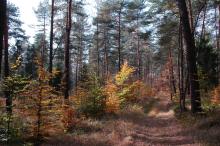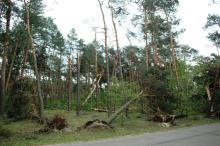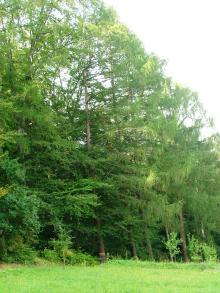 Asset Publisher
Asset Publisher
Polish forests
Poland is in the European lead, while concerning the area of all forests. They cover about 29,2 % of the country territory, and grow within the area of 9,1 million hectares. The overwhelming majority of the forests is state owned, of which almost 7,6 million hectares are managed by the State Forests National Forest Holding..
The number of Polish forest is still growing. The forestation rate of the country has increased from 21 % in 1945 to 29,2 % at the moment. Between 1995 and 2008, the forest area increased by 310 thousand ha. The basis for afforestation works is the "National Programme for Increasing the Forest Cover" (KPZL), assuming an increase of the forestation rate up to 30 % by 2020 and up to 33 % by 2050. Polish forests abound in flora, fauna and fungi. 65 % of the total number of animal species live there.
The forests grow in our country on poor soils, mainly because of the development of the agriculture in previous years. It influences the distribution of the types of the forest sites in Poland. Over 55 % of the forest areas is covered with coniferous forests. In other areas, there are forest sites, mainly the mixed ones. Their small part constitute alder and riparian forests – not more than 3 %.
In the years 1945 – 2011 the area of natural deciduous tree stands within the area of the State Forests National Forest Holding increased from 13 to 28,2 %.
Within the lowlands and uplands the most often occurring tee species is pine. It covers 64,3 % of the forest area of the State Forests National Forest Holding and 57,7 % of private and commune forests. In the mountains the predominant species is European spruce ( in the west) and European spruce with beech (in the east). Domination of pine is the result of carrying on sustainable forest management in the past. Once, the monocultures (crops or cultivations of one species) were the answer to the great demand of industry for wood. Such forests appeared to be quite fragile to climatic factors. They also were often the prey of pests' expansion.
In Polish forests, the share of other tree species, especially deciduous trees have been systematically increasing. The foresters have stepped aside from monocultures – that is why, they try to fit specific species of the forest stand to the natural stand, that would be proper for the given area. Thanks to that, in the years 1945 – 2011, the area of the deciduous tree stands within the lands of the State Forests National Forest Holding increased from 13 to 28,2 %. There occur more and more frequently the following tree species: oaks, ashes, maples, sycamore maples, elms, but also birches, beeches, alders, poplars, hornbeams, aspens, tilias and willows.
Our forests are the most often represented by the forest stands aged 40 to 80 years. The average age of the forest equals 60 years. More and more trees are of big size at the age over 80 years. Since the end of the Second World War, the forests' area has increased up to almost 1,85 million hectares.
Raport o stanie lasów w Polsce 2012
 Asset Publisher
Asset Publisher
Zanocuj w lesie
Zanocuj w lesie
PROGRAM „ZANOCUJ W LESIE”
W NADLEŚNICTWIE CHRZANÓW
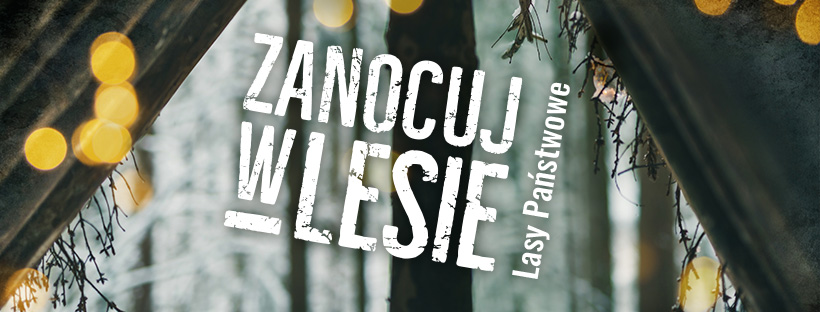
Zapraszamy wszystkich miłośników przyrody, a zwłaszcza amatorów spędzania nocy pod chmurką do odwiedzenia obszarów leśnych wyznaczonych w naszym nadleśnictwie. Miejsca te z pewnością zachwycą różnorodnością drzewostanów, urokiem zlokalizowanych tutaj stawów oraz błogą ciszą przerywaną odgłosami mieszkańców lasu.
Nadleśnictwo Chrzanów przystąpiło do programu „Zanocuj w lesie”, który powstał w ramach kontynuacji założeń zawartych w ogólnopolskim pilotażu udostępnienia obszarów leśnych celem uprawiania aktywności typu bushcraft i surwiwal. Po ponad rocznym okresie trwania pilotażu, ankietowaniu osób korzystających z obszarów pilotażowych, zarządców terenu, rozmowach ze środowiskiem bushcraftowym i surwiwalowym pomysł przekształcił się w stały program pn. „Zanocuj w lesie”.
Obszar objęty programem „Zanocuj w lesie” przedstawia poniższa mapa
Dokładniejsze mapy z udostępnionymi obszarami znajdują się na dole strony w „materiałach do pobrania”
Lokalizacja widoczna jest również:
-
z poziomu aplikacji Mbdl https://www.bdl.lasy.gov.pl/portal/mapy (android)
gdzie z menu wybierz – mapy BDL – mapa zagospodarowania turystycznego.
WAŻNE !
W Nadleśnictwie Chrzanów od roku 2020 obowiązuje nowa numeracja oddziałów leśnych, co nie znalazło jeszcze odzwierciedlenia w terenie
(prace aktualizacyjne w trakcie).
W celu orientacji terenowej należy kierować się mapą „stare oddziały” zamieszczoną na dole strony w „materiałach do pobrania”.
Zanim udasz się na wyprawę zapoznaj się z następującymi informacjami:
-
Regulaminem korzystania z obszaru (dostępny na dole strony w „materiałach do pobrania”).
-
Na udostępnionym obszarze nie ma możliwości rozpalenia ogniska, ale możesz używać kuchenek gazowych pod warunkami określonymi w w/w regulaminie.
-
Mapą okresowego zakazu wstępu do lasu:
https://zakazywstepu.bdl.lasy.gov.pl/zakazy/.
Przed wyjściem do lasu, sprawdź, czy obszar nie znajduje się na obszarze objętym zakazem.
-
Zasadami bezpiecznego korzystania z lasu:
-
Niektóre tereny na wyznaczonych obszarach mogą być czasowo objęte pracami gospodarczymi. Na powierzchnie te obowiązuje zakaz wstępu. Powierzchnie, które w danym miesiącu mogą być objęte pracami leśnymi zostały przedstawione na mapie poniżej:


W razie pytań prosimy o kontakt:
Leśniczy leśnictwa Kroczymiech –Piotr Worwa, tel. 668 119 803
Leśniczy leśnictwa Chełmek –Dariusz Antczak, tel. 668 125 311
Leśniczy leśnictwa Mętków –Zbigniew Kumala, tel. 785 202 170
Leśniczy leśnictwa Bobrek –Michał Zdebik, tel. 662 113 582
- W okresie jesiennym i zimowym z terminami polowań zbiorowych, które koła łowieckie mają obowiązek podawać do wiadomości gmin. Organizator polowania ma obowiązek oznakować teren objęty polowaniem zbiorowym.
Informacje o terminach polowań zbiorowych można uzyskać w:
-
Gminie Libiąż
-
Gminie Babice (dotyczy oddziałów: 677, 678, 679, 693, 699)
-
Kole Łowieckim Łoś (na terenie leśnictw Kroczymiech i Chełmek)
-
Kole Łowieckim Żuraw (na terenie leśnictw Bobrek i Mętków)
-
Jeśli Twój nocleg przewiduje więcej niż 2 noce lub/i więcej niż 9 osób w jednym miejscu musisz wypełnić formularz zgłoszenia noclegów i uzyskać zgodę nadleśnictwa. Zgłoszenie następuje poprzez wypełnienie formularza (dostępny na dole strony w „materiałach do pobrania”) oraz przesłanie go na adres chrzanow@katowice.lasy.gov.pl nie później niż 2 dni robocze od planowanego noclegu. Pozytywna odpowiedź mailowa z nadleśnictwa jest wyrażeniem zgody na zaplanowane noclegi.
Kontakt do koordynatora programu w nadleśnictwie:
Spec. SL ds. stanu posiadania, turystyki i edukacji
tel. 668 119 654
- infografiki:
http://www.lasy.gov.pl/pl/informacje/infografiki/wycieczka-do-lasu.jpg/view
http://www.lasy.gov.pl/pl/informacje/infografiki/jak-sie-znalezc-w-lesie.pdf/view
http://www.lasy.gov.pl/pl/informacje/infografiki/nie-tylko-wakacyjny-lesny-niezbednik
http://www.lasy.gov.pl/pl/informacje/infografiki/jak-zachowac-sie-podczas-burzy-w-lesie.jpg/view
http://www.lasy.gov.pl/pl/informacje/infografiki/lesny-savoir-vivre-100x75.pdf/view
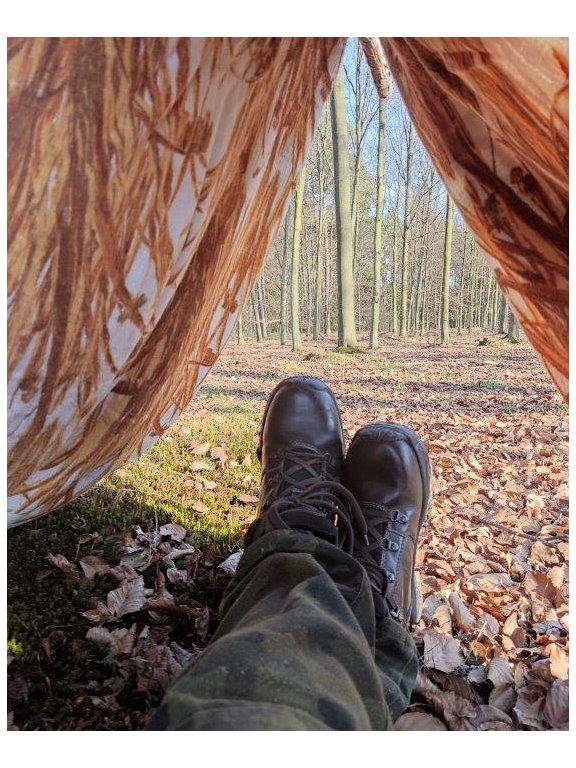


 fot. Paweł Fabijański
fot. Paweł Fabijański
 fot. Paweł Fabijański
fot. Paweł Fabijański
 fot. Paweł Fabijański
fot. Paweł Fabijański






